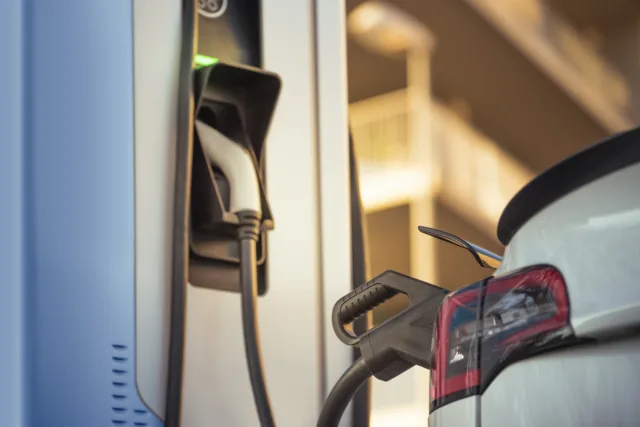The Chinese EV leader is making waves with record sales, a strong grip on its home market, and ambitious global plans.
BYD Company ADR (BYDDY -1.15%) is suddenly everywhere in investor conversations — and for good reason.
The Chinese automaker just crossed the $100 billion revenue mark, kept profits growing through a bruising price war, and is pushing hard into overseas markets. That combination — scale, vertical integration, and global ambition — has BYD squarely on the radar for growth-minded investors.
Let’s explore some important things investors should know about the company.

Image source: Getty Images.
BYD’s economic machine
BYD might not be a household name like Tesla, but the auto conglomerate is quietly becoming a major force in the industrial sector. Think of BYD as an energy-to-wheels platform company. It builds passenger cars (battery-electric and plug-in hybrid), commercial vehicles, batteries (including the LFP «Blade» battery), power, electronics/semiconductors, and energy‑storage systems.
Unlike most automakers who prefer to outsource most of their parts manufacturing, the Chinese company maintains an unusually deep vertical integration. It designs and manufactures critical components — such as batteries, electronics, and more — in-house to keep costs low and supply secure. While heavy, this integrated strategy provides more control to the company, making sure that its fate remains in its hands rather than external suppliers.
Financially, the engine is automobiles. In 2024, BYD reported roughly RMB 777 billion ($106 billion)in revenue and RMB 40 billion ($5.5 billion) in net profit. About 80% came from «automobiles and related products,» with the balance from other products such as mobile handset components and other services.
Why are investors excited about the company?
Like Tesla, BYD has a deep interest in many future-proof verticals. The most obvious is its leadership in the electric vehicle (EV) sector, thanks to its close to two decades of investment in this area. It is the clear leader in China in terms of EV sales volume, and is increasingly expanding into overseas markets.
For instance, BYD opened its first Southeast Asia factory in Thailand (planned 150,000‑unit annual capacity) in 2024, which will be the export hub into the 10 Southeast Asian countries. It is also ramping up its production in Brazil, with an initial 150,000 annual production, with plans to scale up to 300,000 in the second phase. In Europe, the automaker already has a factory in Hungary, and it is expecting its second site in Turkey to come online in 2026. Combined, the two factories have a total production capacity of half a million cars a year .
Having local production plants in different regions offers plenty of benefits, which include improving logistics and bottlenecks, lower tariffs and currency risks, and, more importantly, bringing the BYD brand closer to consumers. It also demonstrates the company’s long-term vision for becoming a global automaker, just like the Japanese did earlier.
But car manufacturing is just one part of the story. BYD is also a major player in battery technology, known for its Blade battery. As a supplier of batteries to the EV industry, BYD will benefit from EV sales of other manufacturers beyond its sales. Its expertise in making car batteries also extends to energy storage, as the giant provides a complete set of new energy solutions for the generation, storage, and utilization of electricity . And let’s not forget that the car maker is also actively investing in autonomous driving technology , offering its advanced driver assistance system for free in a wide range of EV models in China.
In short, BYD has multiple levers to grow in the coming years.
But there are risks to note, though
While BYD’s prospects look bright, investors should not overlook the risks involved. One thing is that the EV competition is intense, especially in the Chinese markets. Aggressive price discounts and the ongoing introduction of new models from new-age car makers like Xiaomi will challenge BYD’s market leadership.
Moreover, the ongoing geopolitical tension between China and the U.S. will likely make BYD’s overseas expansion trickier, let alone the issue of accessing the latest technology in areas like semiconductors, software, etc., which could slow down BYD’s movement toward intelligent driving.
Besides, BYD is still building its brand image among consumers to close the gap with high-end brands like Tesla. It is still too early to know whether this effort will be successful over time.
Above all, BYD is a Chinese company, so investing in the stock will require investors to accept risks related to international stocks, something that not all investors can stomach.
What does it mean for investors?
BYD has proven it can thrive in China’s cutthroat EV market while quietly expanding its global footprint. Its vertical integration and scale give it real staying power, but competition and geopolitics remain serious hurdles.
For long-term investors, the key question is whether BYD can establish itself as a global brand rather than just a Chinese powerhouse. If it can, it will be a solid growth stock for many years to come.








